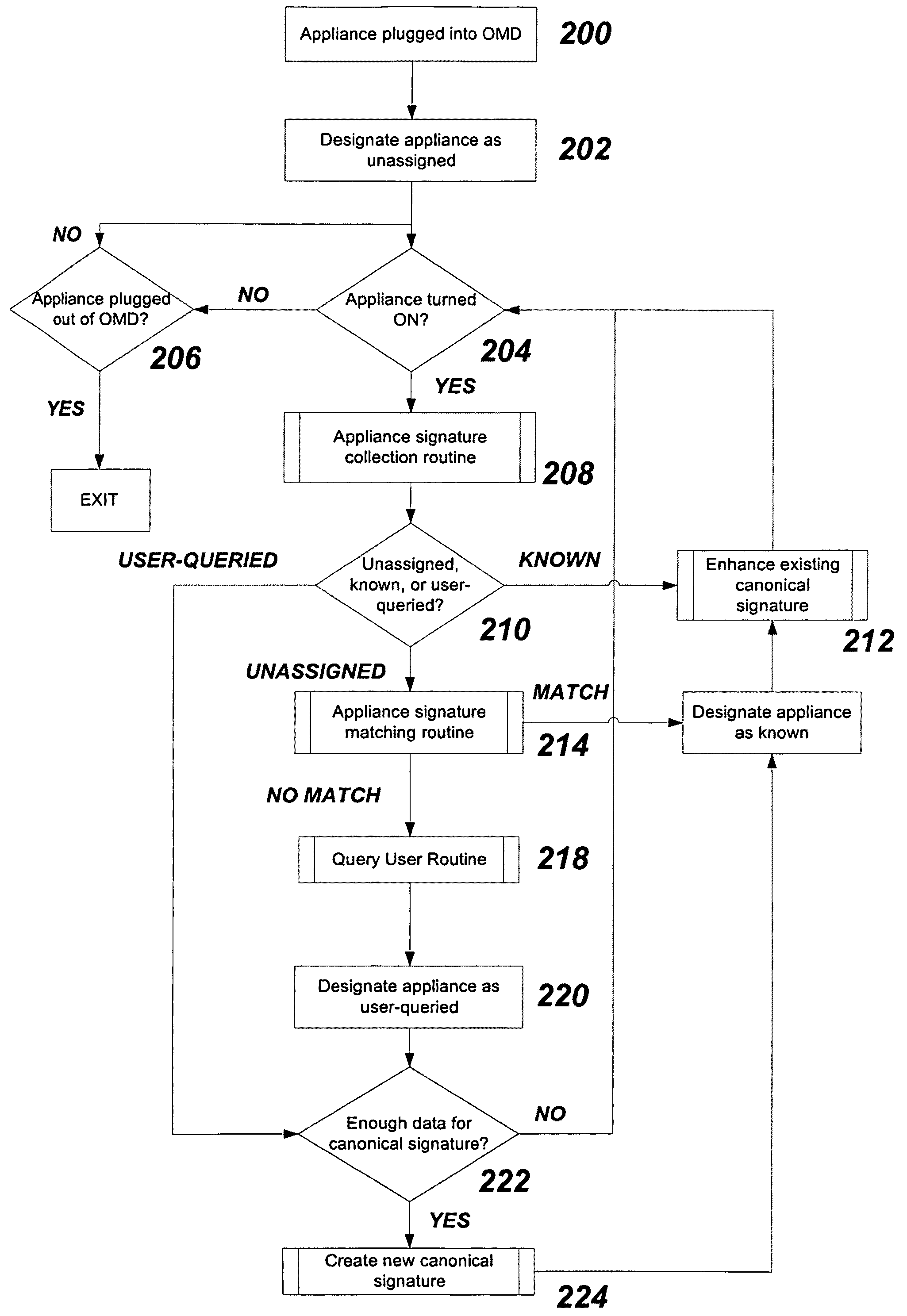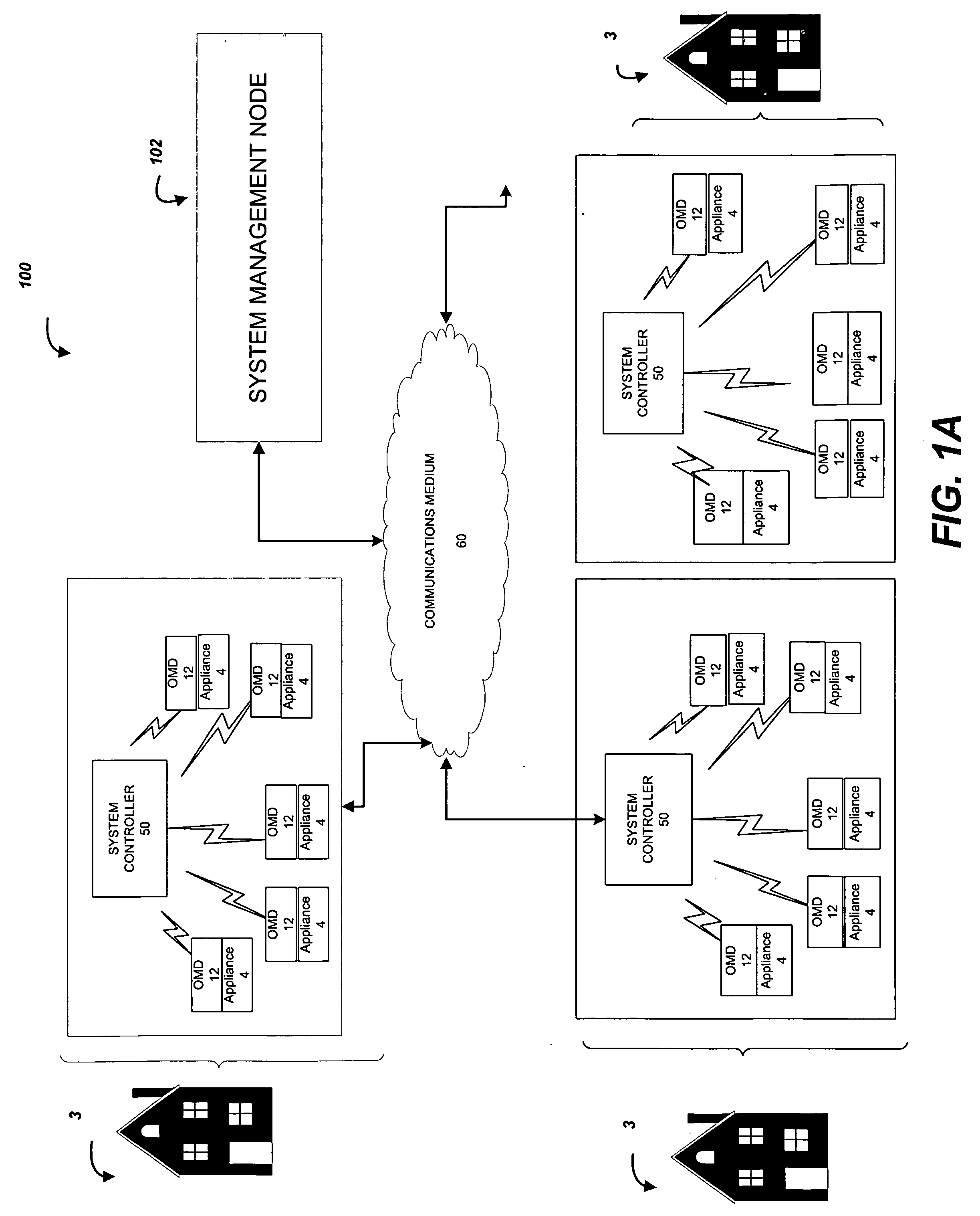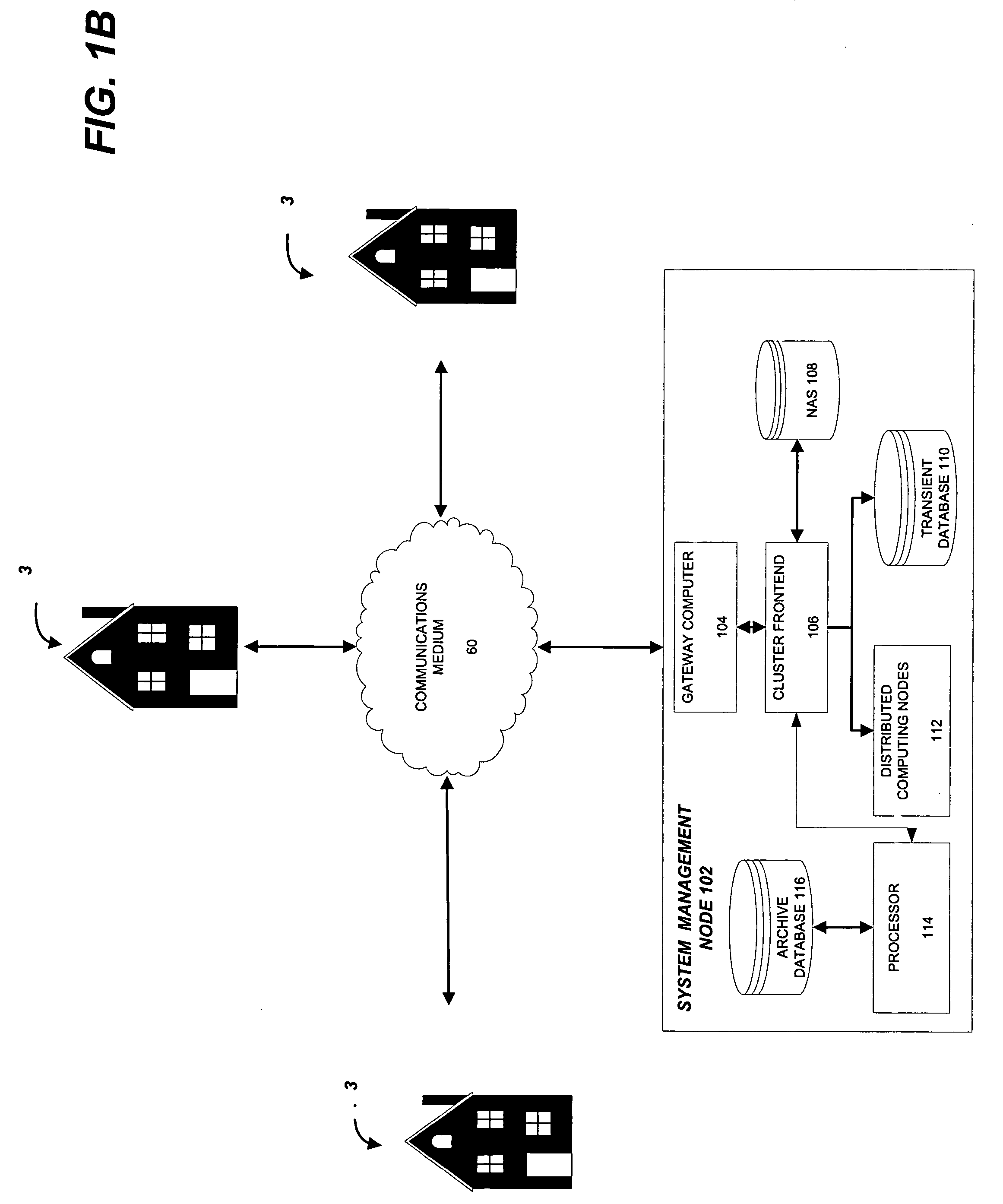System and method for utility usage, monitoring and management
a utility and monitoring system technology, applied in the field of utility monitoring and management, can solve the problems of not being able to achieve cost-effective and systematic ways, difficult to quantify typical and easy ways for individuals to conserve resources, and high cost of serious conservation efforts (such as solar energy conversions)
- Summary
- Abstract
- Description
- Claims
- Application Information
AI Technical Summary
Benefits of technology
Problems solved by technology
Method used
Image
Examples
embodiment
Section III. Exemplary Residential Embodiment
[0087]With reference again to FIG. 1C, details of the system controller 50 are shown to illustrate an exemplary embodiment of the invention. As described herein and illustrated in the attendant figures, the appliance detection and identification system 100 utilizes a system controller 50 situated inside a client node 3 that can be, in one embodiment, a typical residence setting, including, without limitation, a single family residence or a multiple family residence, such as an apartment building. However, it should be understood that the invention has much broader applicability. In particular, it should be understood by those skilled in the art and guided by the teachings provided herein that the appliance detection and identification system 100 may be used in other suitable settings, including, for example, commercial, industrial and utility applications. Other suitable settings are apparent to the reader.
[0088]With continued reference t...
PUM
 Login to View More
Login to View More Abstract
Description
Claims
Application Information
 Login to View More
Login to View More - R&D
- Intellectual Property
- Life Sciences
- Materials
- Tech Scout
- Unparalleled Data Quality
- Higher Quality Content
- 60% Fewer Hallucinations
Browse by: Latest US Patents, China's latest patents, Technical Efficacy Thesaurus, Application Domain, Technology Topic, Popular Technical Reports.
© 2025 PatSnap. All rights reserved.Legal|Privacy policy|Modern Slavery Act Transparency Statement|Sitemap|About US| Contact US: help@patsnap.com



